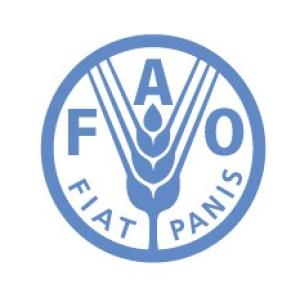Women farmers in Myanmar, have an important role and contributions in country’s economic growth, good production, value chain and food system sustainability. They play a diverse role in agriculture and make enormous contributions not only cultivating crops, but also helping their families, rearing animals for food or trade and working in forestry and fisheries sectors. They are involved in a range of farming activities, including planting, harvesting, processing, and marketing of crops which are important sources of nutrition for people in the country.
Despite this, they are facing significant challenges such as limited access to land, credit, and technology and training, they have been able to achieve certain success in the agriculture sector through their hard work and innovation. The protracted crisis in Myanmar has severely negatively impacted agriculture sector in Myanmar. While food insecurity is already a problem, significant reduction of food production is anticipated due to restrictions on local travels and on private transport services hampering preparations of farm operations, procurement of seeds and other agricultural inputs, rising prices of the inputs and loss of access to export market.
The January 2023 data in Emergencies Monitoring brief produced by FAO and WFP found that households in conflict-affected areas, rural households, female-headed households, households with debt, and those vulnerable to economic shocks had the worst food security outcomes.
44 years old Daw Aye Aye Mon has three family members and lives in Letpadan Township, Bago region, and leads them in farming. The family has a few small businesses such as a grinding powder mill and a small biomass power plant, but agriculture is their main sources of income. She normally grows rice in the monsoon season and black gram in the winter season but due to the ongoing crisis, farmers like Daw Aye Aye Mon have had to think innovatively to try and increase food production.
Since September 2021, the Food and Agriculture Organization of the United Nations (FAO) together with its partner have been implementing a pilot project in three townships of Ayeyarwady, Yangon and Bago Regions to promote double monsoon rice (DMR) cropping system in lowland areas to boost rice production for social and economic wellbeing as well as considering it as a coping mechanism for any possible disaster in the future. The project helps rice producers to establish DMR, introduce suitable varieties, provide farm inputs and agricultural techniques, linkage with possible inputs and outputs markets, technical service providers and financial institutions.
What is double monsoon rice?
Normally, most of the farmers grow only medium or long-term rice variety in a monsoon season. Double Monsoon Rice (DMR) is a technique in which farmers can grow two paddy crops in a monsoon season; immediately growing the second crop once the first crop is harvested.
Prior to the project, Daw Aye Aye Mon had already thought of this idea but was lacking the technique and resources to get the short-term rice variety for the first and the second crop. In early 2022, when FAO project started implementation in her village and introduced the DMR project, Daw Aye Aye Mon enthusiastically participated in pilot demonstration of the DMR cropping in two acres of her farmland. Additionally, she received farm inputs from the project such as qualified seeds and fertilizers, operation costs which includes all machinery costs and labour costs.
While many other farmers were reluctant to participate in the pilot demonstration, for Daw Aye Aye Mon, the DMR pilot project came just at the right time. The progressive farmer saw the potential of this technique and how it would be beneficial for her farmland.
“I was very interested to involve myself in the double monsoon rice cultivation and to understand the practice of this new system as I foresee this providing more income for my family.”
Daw Aye Aye Mon has shown innovation in adopting other new farming practices that would help her to increase yields and improve food security. Although she was also burdened with domestic responsibilities and managing her livelihood activities in her daily life, she has demonstrated adaptability by learning new techniques and approaches to farming. She has been able to adapt to changing environmental conditions and market demands by switching crops and implementing new technologies.
“Being a housewife, a mother, a farmer and a businesswoman at the same time is not easy. Division of roles and shared responsibilities is the key for enabling an equitable environment”, said Daw Aye Aye Mon.
Women farmers like Daw Aye Aye Mon are important for promoting sustainable agriculture practices in Myanmar. They are often more knowledgeable about traditional farming practices and have a deep understanding of the local environment, and thus, play a key role in promoting sustainable farming practices that help to protect the soil, water, and biodiversity.




